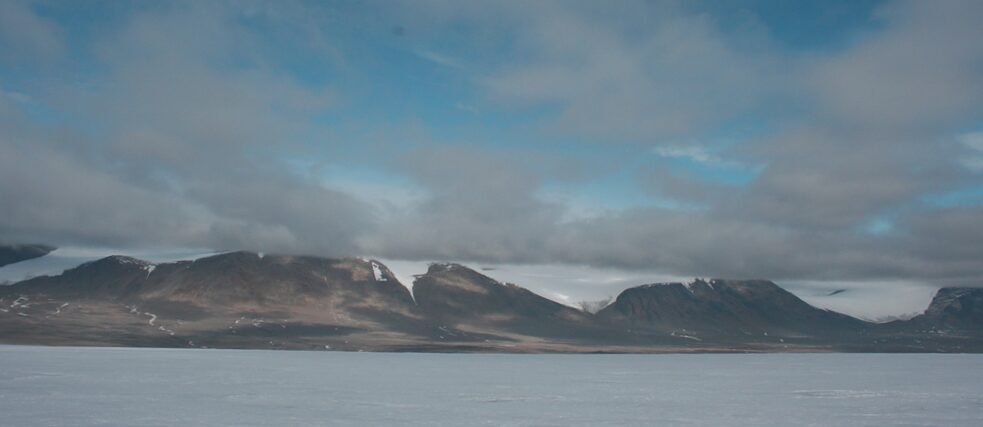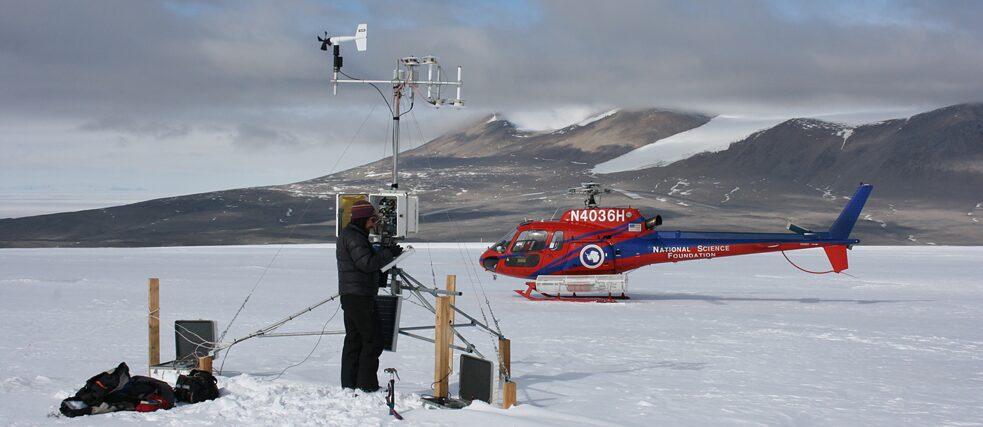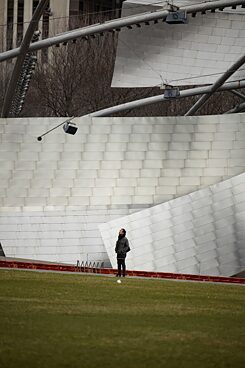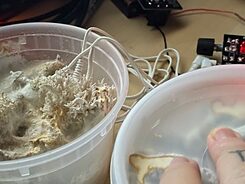New Nature’s Virtual Listening Party
Hearing Beyond The Human

On the afternoon of May 26th 2020, New Nature hosted a virtual listening party that featured work from participants Yewande Pearse, Andrea Polli, Luftwerk, Kling Klang Klong, Suzanne Kite, and Tosca Terán.
De David Shaw
New Nature, an immersive Media and Climate Science Exchange between Canada, Germany, Mexico, and the United States, has transitioned to a virtual mode of delivery in response to the ongoing global COVID-19 pandemic. As a result, the entirety of the exchange has taken place through a series of meetings on the suddenly-omnipresent video conferencing program Zoom. The idiosyncrasies of this platform have become a kind of uneasy participant in the conference itself: “I see us like algae in the tide,” New Nature’s curator Samara Chadwick says: “We’re at the whim of something we don’t entirely understand.” with that in mind, New Nature’s listening party not only provided an opportunity for several of its participants to showcase their work, it also represented probably the most technologically-ambitious component of the project to date, and demonstrated the capacity of technology to both bridge the isolation produced by the COVID-19 pandemic and render the nonhuman world audible.
nonhuman liveliness
Opening the event, Yewande Pearse played a short excerpt from her podcast Sound Science, a show “for science-curious music lovers” hosted by Dublab Radio. The excerpt featured an interview with artist Jana Winderen, who works with marine biologists to record underwater sounds. The two discussed the role that unique modes of sound recording can play in rendering the nonhuman world visible, the wide range of sound perception in nonhuman animals, and how to develop different techniques of listening to the nonhuman world. In particular, they discussed the hydrophone, an instrument which picks up vibrations through direct contact and captures a range of ultrasonic frequencies outside the range of human hearing. This excerpted interview provided some useful context for the pieces that would follow, which each work to demonstrate a wide range of methods for uncovering aspects of the nonhuman world that would be difficult or impossible to meaningfully perceive through the human sensory apparatus alone. Commonwealth Met Station
| © Andrea Polli
Andrea Poli played two pieces from her album Sonic Antartica: the works featured sonifications of Antarctic climate data and soundscape field recordings, and an interview with geographer Hassan Basagic, who describes the “non-quantitative data” that can be gleaned from spending time with the glaciers and growing to understand them as a kind of living system. This nonhuman liveliness is reflected in Poli’s field recordings of the glaciers themselves, which are dense with organic instrumentation: Her work highlights the nonhuman musicality of glaciers, manifested in cracking ice, howling wind, and draining water.
Commonwealth Met Station
| © Andrea Polli
Andrea Poli played two pieces from her album Sonic Antartica: the works featured sonifications of Antarctic climate data and soundscape field recordings, and an interview with geographer Hassan Basagic, who describes the “non-quantitative data” that can be gleaned from spending time with the glaciers and growing to understand them as a kind of living system. This nonhuman liveliness is reflected in Poli’s field recordings of the glaciers themselves, which are dense with organic instrumentation: Her work highlights the nonhuman musicality of glaciers, manifested in cracking ice, howling wind, and draining water.notes and diatonic shifts
Luftwerk, which is the artistic collaboration of Petra Bachmaier and Sean Gallero, presented a piece called Requiem: A White Wanderer, Millennium Park, Luftwerk 2020
| © Luftwerk, David Sampson
White Wanderer, which Bachmaier described as a “climate change soundtrack.” The piece was constructed from low frequency data pulled from melting glaciers and manipulated into audible range for humans. the project, which was inspired by the breakaway of the Larsen C Ice Shelf as a result of anthropogenic climate change, forces its listeners to recognize a kind of environmental degradation that is generally too slow and geographically remote to be perceived directly.
Requiem: A White Wanderer, Millennium Park, Luftwerk 2020
| © Luftwerk, David Sampson
White Wanderer, which Bachmaier described as a “climate change soundtrack.” The piece was constructed from low frequency data pulled from melting glaciers and manipulated into audible range for humans. the project, which was inspired by the breakaway of the Larsen C Ice Shelf as a result of anthropogenic climate change, forces its listeners to recognize a kind of environmental degradation that is generally too slow and geographically remote to be perceived directly.Johannes Helberger of Kling Klang Klong presented an excerpt from a project called For Seasons, which uses the score of Vivaldi’s Four Seasons as a framework for a kind of musical translation of different datasets related to climate change: Animal extinctions, for instance, are mirrored in the sudden unresolved absences from Vivaldi’s original score. Similarly, the increasing levels of atmospheric carbon dioxide are mapped to the gradual lengthening of notes and diatonic shifts, producing compelling moments of dissonance as the piece progresses.
“prayers” about stones
Suzanne Kite played a sound collage featuring a conch shell sextet, recordings of her grandfather, and a police scanner. As Kite describes, the piece was originally made as part of a research project called Seeing is Believing, which focused on AI, deep fakes, machine learning, and the physical extraction of uranium. The piece ends with a digitally-generated voice reading algorithmically-generated “prayers” about stones over breakbeat samples, effectively capturing the piece’s unsettling balance of the technological, geological, and spiritual.The event closed with Tosca Terán, who provided a live performance of what she terms “fungal bio-
 This image shows day 8 of the Pleurotus ostreatus with the electrodes. The mycelium started fruiting after it engulfed the electrodes. Electrodes are still operational
| © Tosca Terán
sonification.” Her performance consisted of a container of Ganoderma lucidum, or Reishi mushrooms, that had been wired with electrodes, effectively turning the bloom of fungi into a kind of organic midi controller. That raw midi data is then interpreted by Teran through an Animoog synthesizer. This human-nonhuman collaboration, like the listening party as a whole, highlights the myriad ways in which technology can be deployed to render visible the hidden sonic landscapes of nonhuman world.
This image shows day 8 of the Pleurotus ostreatus with the electrodes. The mycelium started fruiting after it engulfed the electrodes. Electrodes are still operational
| © Tosca Terán
sonification.” Her performance consisted of a container of Ganoderma lucidum, or Reishi mushrooms, that had been wired with electrodes, effectively turning the bloom of fungi into a kind of organic midi controller. That raw midi data is then interpreted by Teran through an Animoog synthesizer. This human-nonhuman collaboration, like the listening party as a whole, highlights the myriad ways in which technology can be deployed to render visible the hidden sonic landscapes of nonhuman world.
Commentaires
Commenter